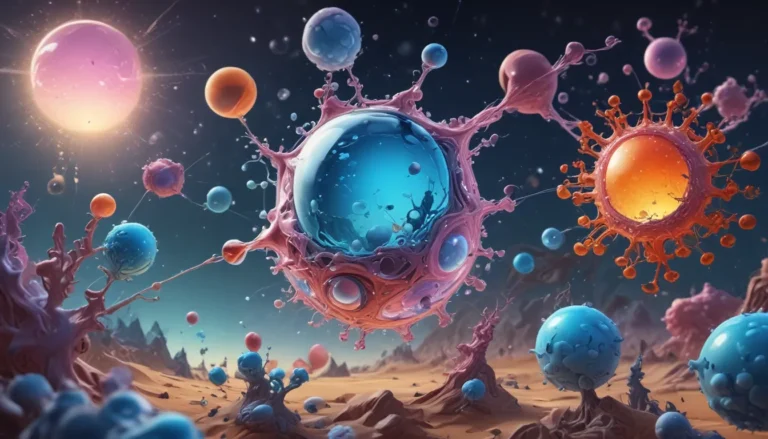A Note About Images: The images used in our articles are for illustration purposes only and may not exactly match the content. They are meant to engage readers, but the text should be relied upon for accurate information.
Catalysis is a captivating realm within chemistry that involves accelerating chemical reactions through the use of catalysts. This essential process has far-reaching applications, spanning from industrial processes to biochemical reactions. While catalysis is a well-explored field, there are still numerous enigmatic aspects that continue to intrigue scientists and spark curiosity.
Understanding the Essence of Catalysis
Catalysis serves as a fundamental process in chemistry, enabling the acceleration of chemical reactions that would otherwise be slow or impractical. It facilitates the conversion of reactants into products by lowering the activation energy and promoting the formation and breaking of chemical bonds. Without catalysis, many essential processes in industry, environmental science, and biological systems would be significantly hindered.
The Marvel of Catalysts: Unsung Heroes of Chemistry
One intriguing aspect of catalysis is the fact that catalysts are not consumed in the reaction process. These magical helpers provide an alternative pathway for reactions to occur without undergoing any chemical changes themselves. Catalysts act as super-efficient assistants that can be used repeatedly, making them incredibly cost-effective and sustainable in the long run.
- Catalytic Role of Enzymes: Enzymes, nature’s catalysts, play a pivotal role in the metabolism of living organisms. These specialized biological catalysts ensure the proper functioning of cells and organisms by catalyzing biochemical reactions at physiological conditions. Their remarkable selectivity and specificity allow enzymes to orchestrate specific reactions with precision, showcasing the intricacies of catalytic processes in the biological realm.
Exploring the Diverse Landscape of Catalysis
In the realm of catalysis, two main types stand out: homogeneous and heterogeneous catalysis. Homogeneous catalysis involves a catalyst in the same phase as the reactants, while heterogeneous catalysis features a catalyst in a different phase, often as a solid material. Both types offer unique advantages and find extensive use in various industrial applications.
- Transition Metals as Catalysts: Transition metals and their compounds serve as commonly used catalysts due to their distinct electronic structures and reactivity. Their ability to accept and donate electrons enables them to participate in redox reactions, facilitating bond formation or cleavage. Examples include platinum in automobile catalytic converters and iron in the Haber-Bosch process for ammonia synthesis.
Harnessing the Power of Acid-Base Catalysis
Acid-base catalysis involves the transfer of protons to facilitate reactions by promoting the formation or breaking of chemical bonds. This form of catalysis plays a vital role in both organic and inorganic reactions, finding applications in industries such as polymerization, esterification, and hydrolysis.
Promoting Environmental Sustainability Through Catalysis
Catalytic converters serve as prime examples of how catalysis contributes to reducing emissions from vehicles. These devices contain catalysts that convert harmful gases, such as carbon monoxide and nitrogen oxides, into less harmful substances, thereby playing a key role in improving air quality and reducing pollution from automobiles.
- Challenges in Catalysis: Catalytic activity can face challenges such as poisoning or deactivation, where substances bind irreversibly to the catalyst or form layers that block active sites. Understanding these challenges is crucial for maintaining the efficiency of industrial processes and ensuring sustainable catalytic applications.
Catalysis Leading the Way Towards Sustainable Chemistry
Catalytic processes are at the forefront of green and sustainable chemistry, enabling the development of eco-friendly routes for chemical production, energy conversion, and waste treatment. By minimizing the use of hazardous reagents, reducing energy consumption, and decreasing the generation of harmful byproducts, catalysis plays a pivotal role in achieving a more sustainable future.
- Chiral Selectivity in Catalysis: Chiral catalysts exhibit the unique ability to catalyze reactions involving chiral compounds, producing enantiomerically pure compounds essential in industries such as pharmaceuticals and agrochemicals. This selective process revolutionizes the synthesis of complex molecules with precise stereocontrol.
The Thriving Realm of Catalysis Research
Catalysis research remains a vibrant area of scientific exploration, with researchers dedicated to discovering new catalysts and enhancing existing ones. Through studying the underlying mechanisms of catalysis, developing innovative catalyst designs, and exploring sustainable applications, scientists are driving advancements in chemistry and technology.
Unraveling the Mysteries of Catalysis
In conclusion, catalysis stands as a captivating field of study within chemistry, illuminating the intricate workings of various chemical reactions. From its enigmatic mechanisms to its diverse applications across industries, catalysis continues to shape scientific discoveries and technological advancements. By unraveling the fundamentals of catalysis, scientists pave the way for more efficient and sustainable processes that propel innovation in countless fields.
Engaging FAQs on Catalysis
- What is catalysis? Catalysis is a process in chemistry where a catalyst facilitates a chemical reaction without being consumed in the process.
- Why is catalysis important? Catalysis increases the rate of chemical reactions and enables reactions to occur under milder conditions, leading to improved efficiency and sustainability in various industries.
- How does catalysis work? Catalysis lowers the activation energy required for reactions by providing an alternative pathway with lower energy requirements, thereby speeding up the reaction.
- What are the different types of catalysis? Various types of catalysis include homogeneous, heterogeneous, enzymatic, and photocatalysis, each operating under different conditions with distinct catalysts.
- What are some examples of catalysis? Examples include the Haber-Bosch process for ammonia production, catalytic converters in vehicles, and enzymes in biological systems.
- Can catalysts be reused? Most catalysts can be reused as they are not consumed during the reaction, though certain reactions may lead to deactivation requiring replacement or regeneration.
- How is catalysis relevant to sustainable development? Catalysis plays a critical role in sustainable development by enabling more efficient and environmentally-friendly processes, reducing energy consumption and waste generation.
- Are there challenges in catalysis research? Yes, challenges include understanding complex reaction mechanisms, discovering new efficient catalysts, and designing catalysts for specific reactions.
- What are potential future applications of catalysis? Future applications could include carbon capture and utilization, sustainable fuel production, and targeted drug delivery systems.
- Can I study catalysis as a student? Catalysis is extensively studied in academic institutions, offering opportunities for students in chemistry, chemical engineering, and related fields to explore and contribute to its advancement.
- Who are notable figures in catalysis research? Notable figures such as Paul Sabatier, Gerhard Ertl, and Richard Schrock have made significant contributions to understanding catalytic processes and mechanisms.
As you embark on your journey through the captivating world of catalysis, prepare to be astounded by the wonders that await. Whether you’re a chemistry enthusiast or simply curious about the mysteries of chemical reactions, the realm of catalysis offers a treasure trove of knowledge and intrigue. Embrace the magic of catalysis as it unveils its secrets and sparks your curiosity for the boundless possibilities in the realm of chemistry.





